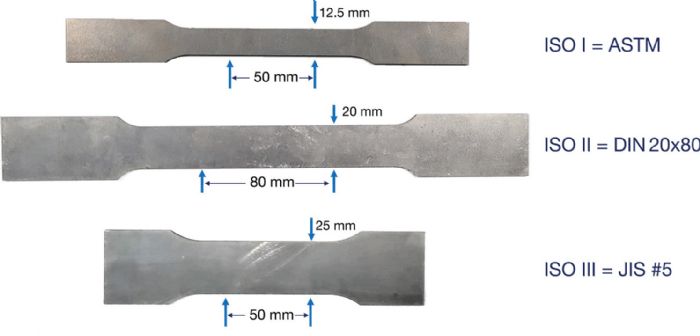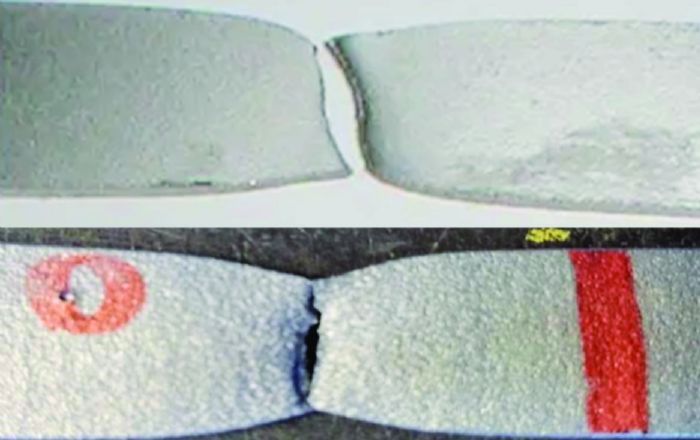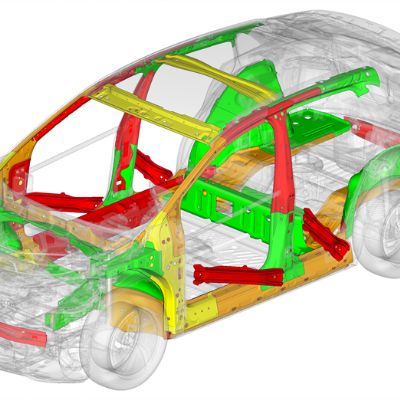Metal Properties: Total Elongation
November 1, 2022Comments
Metal certs document the tensile properties of your purchased coils. Elongation is one measure of ductility, as denoted by the E in the YTE abbreviation. This article discusses elongation at fracture and elongation after fracture, with both distinct from uniform elongation—a topic for a future article.
Higher elongation values are associated with metal alloys better able to form deeper draws without necking or splitting. Elongation also influences other mechanical behavior. Usually, higher elongation and lower yield strength trend together, but the material grade significantly influences this correlation. Deformation on the outer bend surface is comparable to what occurs during tensile testing. Comparing elongation values between different grades may provide a good estimate of their relative bendability. Alloys with higher elongation values accommodate greater rollover before fracture with some benefit in cut-edge ductility. Stronger influences include the microstructure and strength level of the sheet metal, and the cut-edge quality produced at the manufacturing facility.
Although seemingly a simple concept, more goes into determining the elongation value than many realize.
Tensile Dogbone Standard Shapes
 The tensile-test sample, called a dogbone due to its characteristic shape, contains a section of reduced width typically 60 to 120 mm long. All measurements for elongation occur within the central portion of this reduced section, called the gauge length. Elongation calculations are expressed as a percentage change in length from a gauge length of either 50 or 80 mm long. For example, if pulling the sample results in a gauge-length increase to 60 mm with a length before testing of 50 mm, then the elongation calculates as 20 percent.
The tensile-test sample, called a dogbone due to its characteristic shape, contains a section of reduced width typically 60 to 120 mm long. All measurements for elongation occur within the central portion of this reduced section, called the gauge length. Elongation calculations are expressed as a percentage change in length from a gauge length of either 50 or 80 mm long. For example, if pulling the sample results in a gauge-length increase to 60 mm with a length before testing of 50 mm, then the elongation calculates as 20 percent.
Standards-writing organizations such as ASTM, DIN, JIS and ISO each have requirements for tensile-testing procedures, calling out the shapes of the test-sample dogbones (Fig. 1).







 ASTM standards allow for the use of several methods when determining elongation. Advanced systems use a noncontact approach that tracks the movement of pixels projected onto the deforming test sample and determines elongation at fracture. This represents the most accurate approach, but likely requires the greatest capital investment. Other companies use a manual clip-on precision extensometer that expands as the test sample elongates.
ASTM standards allow for the use of several methods when determining elongation. Advanced systems use a noncontact approach that tracks the movement of pixels projected onto the deforming test sample and determines elongation at fracture. This represents the most accurate approach, but likely requires the greatest capital investment. Other companies use a manual clip-on precision extensometer that expands as the test sample elongates. 
 Webinar
Webinar
